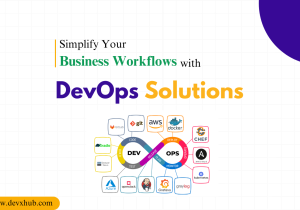Blog - 10 Principles of Software Development You Must Know!
In the dynamic landscape of the software development industry, rapid changes necessitate a structured approach guided by well-defined processes and principles for project success. These principles serve as a compass, steering development efforts towards solutions that are not merely functional, but also robust, maintainable, and adaptable.
This guide offers a thorough examination of the core principles of software development, elucidating their significance and providing insights on their integration into your development practices.
Why are principles required for software development?
Software development principles act as navigational guidelines and foundational ideas that streamline processes, elevate software quality, and bolster the efficiency of development endeavors. Far from being abstract notions, these principles offer pragmatic strategies for addressing the intricacies and obstacles encountered throughout the software development journey. Let’s delve into the necessity for software development principles:
1. Complexity Management: Software development involves intricate designs, interactions, and functionalities. Principles offer a structured approach to managing this complexity, breaking down the process into manageable components and stages.
2. Consistency: Principles provide a consistent framework for software development, ensuring that all team members adhere to a common set of guidelines. This leads to uniformity in code quality, design patterns, and project execution.
3. Risk Mitigation: Software development is fraught with uncertainties and risks. Principles such as iterative development and change management help identify and mitigate risks early, reducing the chances of costly errors later on.
4. Quality Enhancement: Principles like objective quality control and modular design contribute to improving software quality. By implementing these principles, developers can identify and rectify defects, resulting in a more reliable and stable end product.
5. Efficiency and Productivity: Principles promote efficiency by offering proven methodologies and best practices. For instance, the component-based approach encourages code reuse, saving time and effort in development and ultimately boosting productivity across the team.
6. Adaptability: The software industry is dynamic, with evolving user requirements and technological advancements. Principles such as evolving levels of detail and model-based evolution allow for flexible adaptation to changes, ensuring that the software remains relevant over time.
7. Communication and Collaboration: Principles promote effective communication within development teams and with stakeholders. Clear guidelines and shared understanding enable smoother collaboration, leading to better decision-making and problem-solving.
8. Scalability and Maintainability: Principles like an architecture-first approach and modularity lay the foundation for scalable and maintainable software. Designing a solid architecture and breaking down software into modules make it easier to extend, modify, and enhance the system as needed.
9. Cost Efficiency: Applying principles can reduce development costs in the long run. By catching errors early, avoiding rework, and promoting efficient practices, software development becomes more cost-effective.
10. User-Centric Approach: Principles help developers align their efforts with user needs and expectations. By following principles like demonstration-based approaches, developers can ensure that the software addresses real-world problems and provides meaningful solutions.
Software development principles offer a guide for crafting top-tier software that fulfills user requirements, embraces adaptability, and endures over time. They provide a structured pathway for addressing obstacles, fostering collaboration, and attaining triumphs in a continually shifting digital environment.
10 principles of software development

Let’s take a look at the 10 major software development principles that you should incorporate while creating your project roadmap.
1. Architecture first approach
At the heart of successful software lies a strong architectural foundation. The architecture-first approach emphasizes the significance of devising a robust architecture early in the development cycle. By addressing architectural intricacies in the initial stages, developers can mitigate ambiguities, enhance decision-making, and optimize the overall productivity of the project.
2. Iterative life cycle process
The iterative life cycle process entails a cyclic approach to development, where stages like requirement gathering, design, implementation, and testing are revisited to refine and improve the software. This method allows for the identification and elimination of risks in the early stages. By continuously iterating through the development cycle, software projects become more adaptable to evolving requirements and changes in the development landscape.
3. Component-based approach
The component-based approach capitalizes on the reuse of pre-defined functions and code components. This approach not only accelerates development but also ensures consistency, reduces errors, and promotes maintainability. By integrating reusable components, developers can streamline the design process and create software that is not only efficient but also easy to manage and upgrade.
4. Change management system
Change is an inevitable part of software development. A robust change management system facilitates controlled and systematic handling of changes. It involves identifying, evaluating, and implementing changes while maintaining the stability and quality of the software. Such a system ensures that the software remains adaptable to dynamic requirements and minimizes disruptions caused by changes.
5. Round trip engineering
Round trip engineering integrates code generation and reverse engineering in a dynamic environment. This principle enables developers to work seamlessly on both aspects, ensuring consistency and accuracy between code artifacts and design models. Automatic updates of artifacts enhance collaboration, reduce errors, and contribute to the overall efficiency of the development process.
6. Model-based evolution
In model-based evolution, software development relies on graphical and textual representations to adapt to changing requirements. Models provide a conceptual framework for understanding the software’s architecture and behavior. This approach empowers developers to evolve the software’s design and functionality based on real-time feedback, ensuring that the end product aligns with user needs.
7. Objective quality control
Quality control is paramount in software development. The objective quality control principle emphasizes defining and adhering to quality metrics, checklists, and improvement measures. By consistently monitoring and improving quality, software projects can minimize defects, enhance user satisfaction, and ensure that the final product meets established standards.
8. Evolving levels of details
Planning intermediate releases with evolving levels of detail enables progressive development. This principle promotes incremental refinement of use cases, architecture, and design details. By breaking down the development process into manageable stages, teams can adapt to changes and enhance the software’s flexibility and responsiveness to user needs.
9. Establish a configurable process
Software development is not one-size-fits-all. The establishment of a configurable process enables customization based on project requirements. This principle ensures that methodologies, tools, and practices can be tailored to align with specific project goals and constraints, resulting in a more efficient and effective development process.
10. Demonstration-based approach
Effective communication with stakeholders is essential in software development. The demonstration-based approach involves showcasing working software to stakeholders. Demonstrations offer a clear representation of the problem domain, approaches used, and proposed solutions. This approach fosters engagement, encourages feedback, and enhances productivity and quality.
How can a company incorporate principles of software development in their project?
Integrating software development principles into a company’s projects is paramount for crafting top-tier, adaptable solutions. Here’s a systematic approach on how a company can seamlessly infuse these principles into their project lifecycle:
1. Educate the Team: Commence by educating the development team on software development principles. Conduct workshops, training sessions, and provide resources to foster a deep understanding of each principle’s significance and implications.
2. Customize for Projects: Tailor the principles to suit the unique needs of each project. Prioritize and adapt their application to align with specific project requirements and goals.
3. Commence with Architecture: Kickstart the project with an architecture-first approach. Allocate dedicated time to define and design the software’s architecture, proactively addressing potential challenges and uncertainties.
4. Embrace Iterative Planning: Embrace an iterative lifecycle process, breaking down the project into manageable iterations. Continuously revisit and refine stages like requirement gathering, design, implementation, and testing to accommodate changes and enhance project direction.
5. Foster Component Reuse: Foster a component-based approach by cultivating a library of reusable components. Encourage developers to leverage existing code to expedite development, ensure consistency, and minimize errors.
6. Implement Change Management: Set up a robust change management system to monitor and evaluate project changes systematically. Establish a structured process for reviewing, assessing, and implementing changes while upholding stability and quality.
7. Integrate Round Trip Engineering: Seamlessly integrate round trip engineering using tools that facilitate automatic updates between code and design artifacts, ensuring consistency and accuracy throughout development.
8. Establish Quality Control Measures: Define objective quality control measures encompassing quality metrics, checklists, and improvement plans to uphold high standards and meet user expectations.
9. Embrace Incremental Evolution: Plan for evolving levels of detail by incrementally developing the project. Refine use cases, architecture, and design details with each iteration to adapt to changing requirements and user needs.
10. Implement a Configurable Process: Deploy a configurable process enabling teams to select methodologies, tools, and practices tailored to each project’s requirements while maintaining consistency.
11. Foster Continuous Improvement: Cultivate a culture of continuous improvement by regularly assessing adherence to principles, identifying areas for enhancement, and integrating lessons learned into future projects.
12. Secure Leadership Support: Ensure company leadership understands the value of these principles. Leadership support fosters an environment conducive to their implementation and ensures adequate resource allocation.
By embedding these principles into projects, companies establish a robust foundation for development. These principles guide decision-making, foster collaboration, and yield software solutions that are not only technically proficient but also responsive to market dynamics and user needs.
Real-life examples of companies using principles of software development
Below are real-life examples of globally renowned companies that have effectively utilized principles of software development to elevate their businesses:
1. Netflix – Embracing the Architecture-First Approach
Netflix’s triumph stems from its robust architecture-first approach. Prioritizing a scalable and modular architecture enabled Netflix to accommodate millions of users seamlessly, overcoming challenges in content delivery and personalization. The outcome? A resilient system capable of handling surges in demand, setting the bar for streaming platforms worldwide.
2. Microsoft – Navigating with the Iterative Life Cycle Process
Microsoft’s Windows operating system exemplifies the power of iterative development cycles. With each release, Microsoft iterates through requirement gathering, design, implementation, and testing, swiftly adapting to evolving user needs. Challenges like maintaining compatibility and managing feature scope are met head-on, resulting in a stable and enduring OS.
3. Google – Leveraging the Component-Based Approach
Google’s Android operating system showcases the efficiency of a component-based strategy. By reusing components like Android runtime and UI elements, Google accelerates device development while ensuring consistency across various hardware setups. This fosters a flexible ecosystem catering to diverse device requirements.
4. Amazon – Orchestrating Effective Change Management
Amazon’s e-commerce platform exemplifies adept change management. Continuously deploying updates, Amazon enhances user experience while overcoming challenges of service availability and regression avoidance. The outcome is a dynamic platform evolving seamlessly to offer customers new features without interruptions.
5. Facebook – Mastering Round Trip Engineering
Facebook’s development process revolves around thorough round trip engineering, facilitating swift updates and feature additions. By integrating code generation and reverse engineering, Facebook maintains code quality despite managing a vast codebase. This results in a platform that evolves rapidly, minimizing errors and ensuring code coherence.
6. Tesla – Thriving with Model-Based Evolution
Tesla’s electric vehicles demonstrate the benefits of model-based evolution. Leveraging over-the-air updates, Tesla introduces new features, enhances performance, and addresses issues without physical recalls. Challenges such as safety and reliability concerns are managed, resulting in a fleet of vehicles that continually improves to meet customer preferences.
7. NASA – Exemplifying Objective Quality Control
NASA’s space missions epitomize objective quality control, adhering to stringent quality metrics and testing protocols to ensure mission success and crew safety. Challenges inherent in space exploration are tackled, leading to successful missions that push the boundaries of human exploration.
Conclusion
Successfully navigating the intricate landscape of software development necessitates a comprehensive understanding and effective implementation of its fundamental principles. From architecture-first strategies to demonstration-based approaches, each principle plays a pivotal role in shaping the trajectory of software projects. By steadfastly adhering to these principles, developers can craft software solutions that not only function seamlessly but also exhibit adaptability, reliability, and alignment with the ever-evolving demands of the industry. Through the diligent application of these principles, the realm of software development continues to progress, delivering innovative solutions that propel advancements in the digital era.
If you’re seeking to scale your software development endeavors and require a team of expert software developers, consider exploring DEVxHUB. Here, you gain access to full-time development resources tailored to various business needs, along with comprehensive governance and controls, and meticulous attention to technical requirements.
Related Posts
Categories
- App Development (2)
- Design (2)
- DEVxHUB (30)
- Digital Marketing (2)
- Guide (24)
- It Bangladesh (1)
- Logo design (1)
- Operating system (1)
- Personal Improvement (14)
- Planning (4)
- Project management (3)
- Social media (2)
- Software Development (5)
- Software Quality Assurance (8)
- Startups (1)
- Team work (1)
- UI UX (1)
- Web Development (6)
Main Tags
- 2024
- Android
- app development
- bangladesh
- content writing
- design
- devxhub
- Digital marketing
- Guide
- IOS
- It
- logo design
- Operating system
- Personal Improvement
- planning
- project management
- social media
- Software Development
- Software Quality Assurance
- software testing
- software testing types
- Startups
- Success
- team
- UI UX
- UI UX design
- VR
- Web Development















